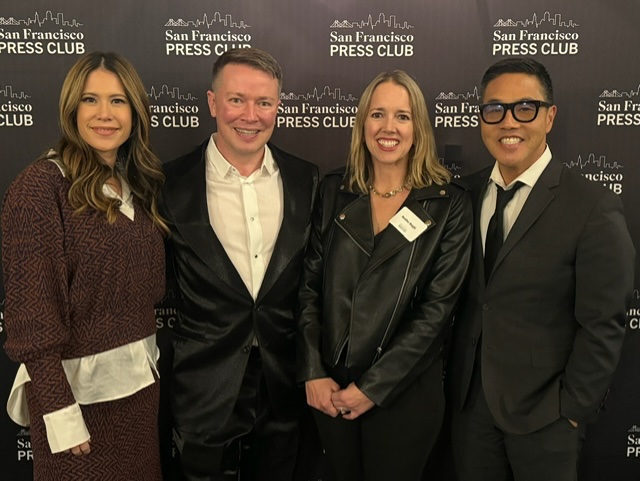The entrance of artificial intelligence to the world stage has definitively placed humanity into a new era. It’s the steam engine and combustion engine, manned flight and everything in between, all wrapped into one, and probably more. It’s the stuff of dreams, of sci-fi adventures. It’s HAL 9000 in the digital flesh, and with it all the possibilities and pitfalls.
Projected to contribute $15.7 trillion to the global economy by 2030, it’s unlike any technology before it. Brought to the world at a time when digital connectedness and data at scale are the norm, the ability of artificial intelligence to integrate into existing technology infrastructure means that its transformative potential can be realized across the board. All industries have room for AI in their operations, and many organizations are racing to deploy and make use of the latest developments in AI.
But the technology is advancing faster than anyone could have predicted, and that lightspeed progress has created a shroud around AI that effectively makes it a black box for most of the world.
Herein lies the challenge for communicators working with companies that are developing and deploying AI across their operations. As communicators, our job is to build awareness, understanding and appreciation for our organizations, whether they’re at the bleeding-edge of AI or slowly integrating AI into their business model and offerings. Doing so requires carefully thought out, integrated marketing and messaging, strategically executed to hit audiences that matter.
Understanding AI for PR
It’s our job as public relations professionals to be able to dive deep into the spaces in which our companies operate. However, staying on top of the latest developments and trends is a never-ending task.
Let’s start with the basics: What is artificial intelligence?
The basic definition of artificial intelligence is the intelligence of machines or software, which doesn’t help much. And that broad definition is the result of the huge range of capabilities and applications that fall under the AI umbrella. From basic chatbots to automated workflow systems, ChatGPT and new generative AI capable of producing novel images, they all ladder up to Artificial General Intelligence (AGI) – the holy grail. AI that has achieved AGI will be capable of thinking and reasoning just as humans do and can even understand complex emotions. The test for this used to be the Turing Test, which is where a text-based AI system can fool a human into thinking the AI system is also human, but ChatGPT pretty much blew that out of the water, according to industry leaders like DeepMind and Inflection AI founder Mustafa Suleyman.
The goalposts seem to change faster than we can set them, so let’s at least maintain a grasp of the next important thing: How does AI work?
Machine learning (ML) is a subset of AI that is focused on building machines that are capable of learning from data without the need for explicit programming to adapt the existing model to the new information. ML is great for automating work processes, but has its limitations. Deep learning is another subset that will come up from time to time, and is focused on pattern recognition and prediction.
All AI models are trained on data sets, and the more robust and accurate the data sets, the more effective the training. Big data has been big business for years, and AI’s reliance on large data sets is another reason why this moment in time is ideal for an explosion in AI.
There are a number of training models for various use cases, and more are being developed all the time. From deep neural networks that mimic the ways in which the human brain makes connections between various things to reinforcement learning, which rewards desired outcomes as you would train a dog a new trick. It’s important to understand exactly what type of AI you’re working with to have a firm grasp on how exactly this particular AI is making impacts across an organization and its offerings.
The current state of AI is incredible, make no mistake, but we’ve got a ways to go until we’re fully in the sci-fi future we see in the movies and on TV.
For starters, AI has a big bias problem, and we’re still trying to figure out how to mitigate bias learned from data sets that represent behavior that was inherently biased, whether outright or implicit. Take for example facial recognition software in law enforcement that can’t tell Black people apart. Amazon scrapped AI hiring software that showed bias against women. Then there’s the Apple card that Apple co-founder Steve Wozniak found discriminated against his wife. When bad data goes in, bad data comes out.
Accuracy and reliability are also an issue, and can lead to some major issues if generative AI is blindly trusted, such as the embarrassing instance with ex-Trump lawyer Michael Cohen trusting in AI-generated legal cases that were simply entirely made up. AI can hallucinate, which is exactly what it sounds like and twice as weird, and caused Microsoft’s Bing AI to profess its love for users.
As communicators, our job is to build awareness, understanding and appreciation for our organizations, whether they’re at the bleeding-edge of AI or slowly integrating AI into their business model and offerings. Doing so requires carefully thought out, integrated marketing and messaging, strategically executed to hit audiences that matter.
Building a Unified Example
Speaking to the technological specifics of AI will be lost on many audiences. It’s easy to nerd out and get into the weeds, but that’s exactly where you’ll lose people. The retail and ecommerce reporter, for example, likely won’t care whether the AI you’re pitching is based on linear regression or random forest models. What they need to know is the why and the how – why this tech is being implemented and how exactly it’s going to make an impact for users.
Effective translation requires relation, and the best way to accomplish this is with a unified example that showcases what’s possible with this new AI capability.
You need to understand the pain points that your AI is solving and connect that industry need to the outcomes of this new AI you’re pitching. Maybe it automates a particularly cumbersome task, maybe it provides a level of insight not possible before at an individual level, perhaps it turns a nondescript thing into an interactive, engaging experience.
Take, for example, Hitch Interactive’s recent launch of its AI in Immutable Miniverse (AIIM). While us AI people love a good VentureBeat hit, we can expand this narrative (and our coverage reports!) by thinking about how various audiences digest this type of information. To build a unified example for the food writers who don’t know the first thing about AI, be creative about what’s possible. Imagine what the experience in their foodie-centric metaverse would be like and how people might interact with it – what has that “wow factor” and how to explain it in as relatable terms as possible. For me, what comes to mind is a metaverse where LLM embedded NFTs of famous chefs can provide answers and guidance for users looking to replicate their recipes. In this way, we build a bridge between two worlds that would normally have never intersected. And even if the tech is still nascent, can’t you imagine a world where Harry Potter-style portraits could teach you how to cook in the metaverse?
Staffing for Success
The foundation of success in PR is the knowledge and experience of your team. While it can be tempting to throw your best tech and AI people at a new challenge, don’t discredit your non-technical staff who have expertise in a target area. Mixing and matching specialties can result in some incredibly creative thinking, even if you’re just bringing them in for a brainstorm.




